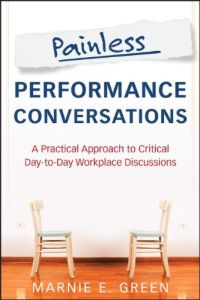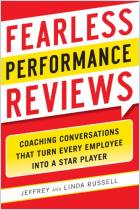
Recommendation
Most managers dislike having critical conversations with the employees they supervise. If not handled well, these “performance conversations” can be painful for employee and manager alike. Leadership consultant Marnie E. Green explains how to make these sometimes wrenching conversations painless and productive. Using the tools that she provides, you can turn performance conversations into positive experiences for both you and your staff members. Such discussions can become spark plugs that enhance your employees’ productivity and engage them more fully in their work. Though some of her sample dialogues seem a bit contrived, Green writes in a pleasing conversational tone. A lot of checklists, charts, pointers to remember, and the like will make it easier for you to put her suggestions into practice. Therefore, getAbstract recommends her insights and advice to all supervisors who dread day-to-day performance discussions.
Summary
About the Author
Marnie E. Green, the principal consultant for the Management Education Group, blogs on Jobing.com and presents webinars on HR.com.


















Comment on this summary or Start Discussion